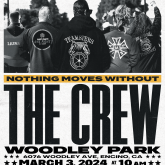The New York Times
By: John Pearley Huffman / Published: May 13, 2010
THE makers of “Bullitt” reportedly put together that film’s legendary car chase in 1968 using two 1968 Dodge Chargers and two 1968 Ford Mustangs. In 1977, the director Hal Needham recalls, all of the mayhem in “Smokey and the Bandit” was accomplished with five black 1977 Pontiac Firebird Trans Ams.
But for “The Green Hornet,” the movie starring Seth Rogen that is due to open in January, a staggering 29 vintage Chrysler Imperials were modified to portray Black Beauty, the superhero’s luxurious supercar.
“I wonder how they did it with only four cars,” Neal Moritz, producer of “The Green Hornet” and the man behind the car-obsessed “Fast and Furious” movies, said about “Bullitt.” “Because of the advent of technology, we’re able to use cars for so many different things.”
Despite the development (and ubiquity) of computer graphics, big Hollywood movies are destroying more sheet metal than ever. In fact, the demand for movie cars — particularly cars modified to safely perform specialized stunts or create specific shots — has led to a relatively new title, buried low in the final credits, that is appearing more often: picture car coordinator. And one of the busiest picture car coordinators is Dennis McCarthy, who often works for Mr. Moritz.
“The bar just keeps getting raised,” explained the permanently calm Mr. McCarthy, 43, in his leased 30,000-square-foot shop in Sun Valley, Calif., just north of the Bob Hope Airport in Burbank amid auto dismantling yards. “Ten or 15 years ago I’d get a request and just say, ‘You’re nuts. You’re dealing with five cars and that’s all you got.’ And then we had to work around it. But the difference is now, filming cost has gone through the roof. So it’s cheaper just to have multiple cars.”
Traditionally, and still the case for most productions, the cars that appear in a film are the responsibility of the transportation coordinator. That’s the same person who is also expected to make sure that the production’s trucks, vans and buses move the cast, crew and equipment from location to location. Ordinary sedans, police cars, cabs, ambulances and vintage vehicles used in the movie are usually rented from companies like Cinema Vehicle Services and Hot Shot Picture Cars, which maintain fleets just for that purpose. Those companies have fabrication and paint facilities that provide specialized services.
But for films with ambitious, peculiar or far-flung vehicular plans, a dedicated picture car department helps to ensure that filming never slows down for an ancient Chrysler that won’t start or a bad guy’s Torino that shows up on set wearing the wrong color.
“I deal with Cinema Vehicle Services and Hot Shot, and those guys are all great,” said Mr. McCarthy, who grew up in the hot rod subculture of Southern California. “But it’s a different type of system. In my case, all the guys who built the cars are on the set with the cars. So they know the cars inside and out. You’re not on the phone at 2 in the morning trying to wake someone to find out where the relay for the fans is, or something like that.”
Between films, his shop closes, and the mechanics, fabricators and painters, all members of Local 399 of the Teamsters, scatter to other jobs. He starts every film with nothing but the script. . . TO READ MORE CLICK HERE.

